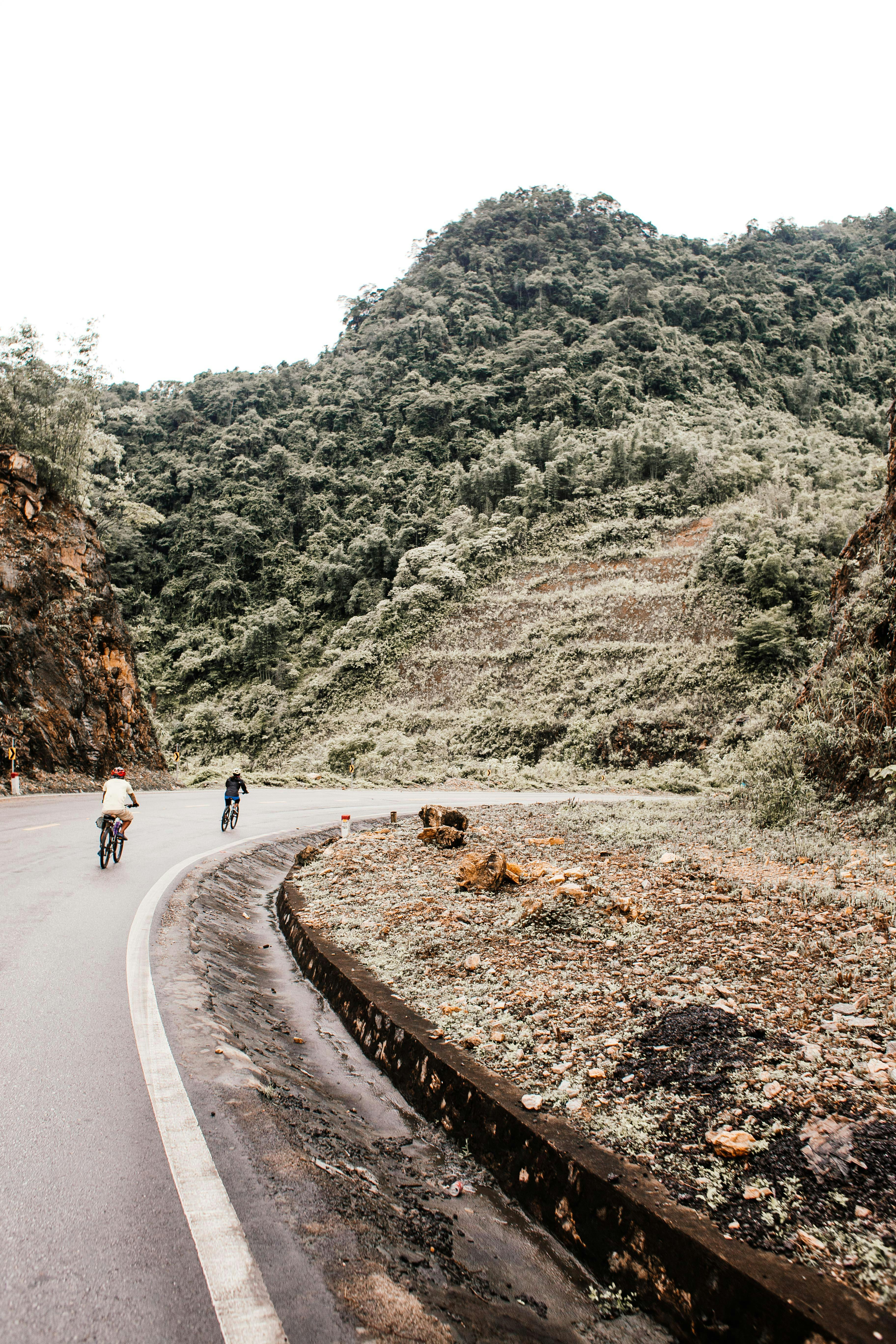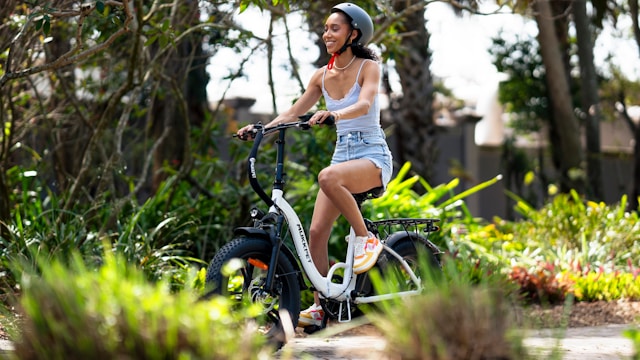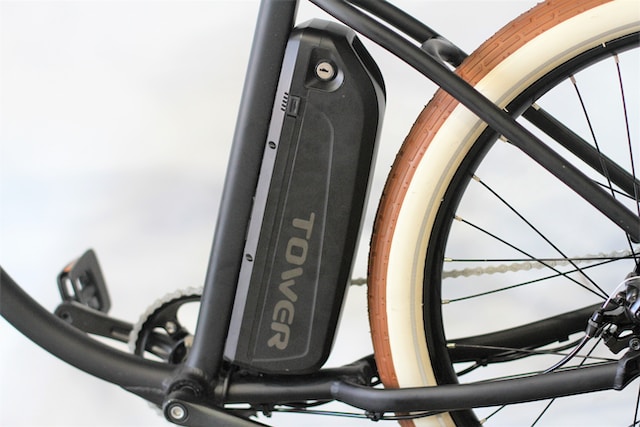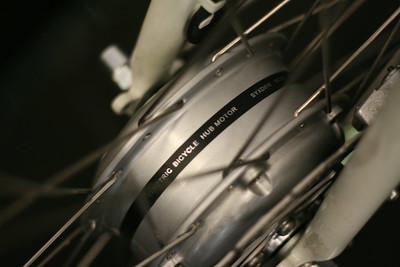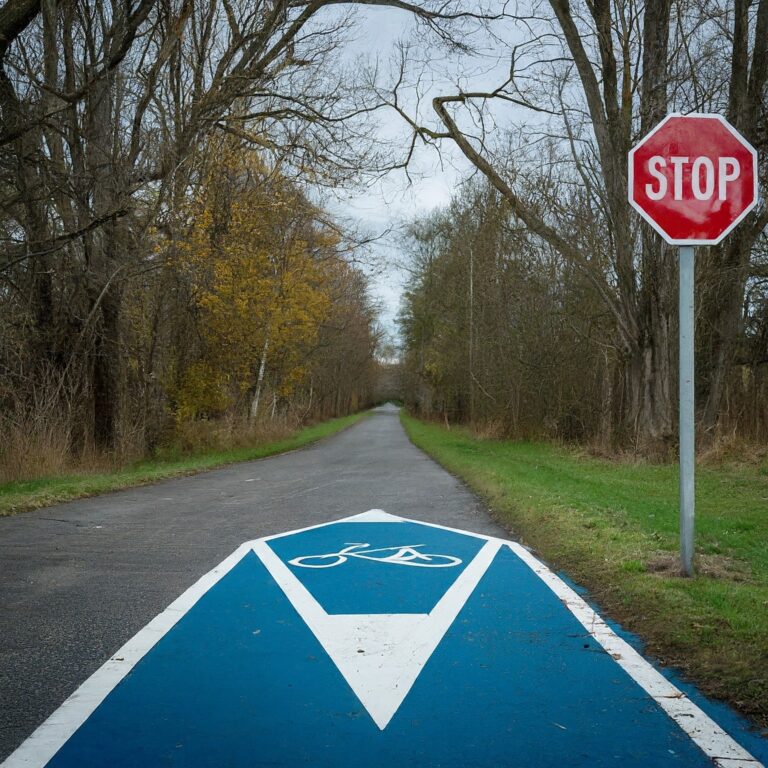E-MTB Suspension Setup: Numbers for Dialing in Your Ride (Measurements and Settings)
Last Updated on July 27, 2024 by Kristina Grant
Your E-MTB’s suspension is more than just a comfort feature; it’s a critical component that directly impacts your bike’s performance, control, and overall riding experience. By understanding the intricacies of suspension setup, you can transform your E-MTB from a capable machine into a finely tuned trail-taming weapon.
This guide delves into the essential aspects of E-MTB suspension tuning, providing practical advice and data-driven insights. We’ll explore key measurements, adjustable settings, and how to optimize your bike’s performance based on your riding style and terrain. Whether you’re a beginner seeking a solid foundation or an experienced rider aiming to fine-tune your setup, this comprehensive resource will equip you with the knowledge and tools to dial in your E-MTB suspension like a pro.
Let’s dive into the world of suspension and unlock the full potential of your electric mountain bike.
Key Takeaways
- Sag is crucial: Proper sag ensures optimal suspension performance, traction, and comfort.
- Air pressure matters: Adjust air pressure to match your weight and riding style.
- Rebound and compression control: These settings affect how your suspension reacts to bumps and impacts.
- Experimentation is key: Finding the perfect setup requires testing different settings.
- Consider your riding style: Adjust suspension settings to match your preferred riding style.
- Regular maintenance is essential: Keep your suspension clean and serviced.
- Don’t be afraid to ask for help: Consult a bike shop or suspension specialist if needed.
Understanding Your E-MTB Suspension
Your E-MTB’s suspension is the critical component that bridges you and your bike with the trail. It absorbs impacts, maintains traction, and provides comfort. To get the most out of your rides, it’s essential to have a dialed-in suspension setup.
The Importance of Suspension Setup
A well-tuned suspension can dramatically improve your riding experience. It enhances traction, reduces fatigue, and boosts confidence. A poorly set-up suspension can lead to discomfort, reduced control, and even increased risk of injury.
RELATED CONTENT
Key Suspension Components
Your E-MTB’s suspension system is composed of several essential components working in harmony to provide a smooth and controlled ride.
Fork
The fork is the suspension component at the front of the bike. It consists of two stanchions that connect the front wheel to the frame. Inside the fork, you’ll find the following components:
- Air spring or coil spring: This component absorbs the impact when the wheel hits an obstacle. Air springs are adjustable, while coil springs offer a consistent spring rate.
- Dampers: These control the speed at which the fork compresses and rebounds, preventing excessive bouncing.
- Stanchions: The outer tubes of the fork that provide structural support.
- Lower legs: The part of the fork that connects to the wheel.
Shock
The shock is the suspension component at the rear of the bike. It connects the frame to the rear swingarm. Key components of a shock include:
- Air spring or coil spring: Similar to the fork, this component absorbs impacts.
- Dampers: Control the shock’s compression and rebound.
- Reservoir: Some shocks have a separate reservoir for oil and nitrogen, helping to maintain consistent damping performance.
- Hardware: Includes mounting hardware, seals, and other components that hold the shock together.
Additional Components
- Leverage ratio: This determines how the shock reacts to forces applied to the rear wheel.
- Linkage: The mechanism that connects the shock to the frame and swingarm.
- Bushings and seals: These components reduce friction and prevent contaminants from entering the suspension.
E-MTB Suspension Setup Numbers
Understanding key measurements is essential for optimizing your E-MTB’s suspension performance. While there are no one-size-fits-all numbers, these guidelines can help you find a starting point.
Sag: The Foundation
- Definition: Sag is the amount of suspension travel used when you’re sitting on the bike.
- Ideal range: Generally, 20-30% of total travel is a good starting point.
- Impact: Correct sag ensures optimal suspension performance, traction, and comfort.
Air Pressure: The Spring
- Relationship: Higher air pressure equals a firmer ride, while lower pressure offers more plushness.
- Starting point: Most manufacturers provide pressure guidelines based on rider weight, but personal preference plays a significant role.
- Impact: Air pressure directly affects how the suspension reacts to impacts and terrain.
Rebound and Compression: The Dampers
- Rebound: Controls how quickly the suspension returns to its extended position after a compression.
- Compression: Affects how easily the suspension compresses.
- Measurement: Often measured in clicks, with more clicks typically increasing damping.
- Impact: Proper rebound and compression settings prevent excessive bouncing, improve traction, and enhance overall control.
Beyond the Basics
- LSC/HSC: Low-speed and high-speed compression settings offer finer control.
- Bottom Out Resistance: Controls how the suspension behaves near the end of its travel.
- Token Adjustments: Some air forks allow for adjusting the air spring curve.
Remember: These numbers are starting points. The ideal setup is often a combination of these settings and personal preference. Experimentation is key to finding your perfect setup.
How to Set Up Your E-MTB Suspension
Setting up your E-MTB suspension is a crucial step in optimizing your ride. While there’s no one-size-fits-all approach, these guidelines will help you get started.
Measuring Sag
Sag is the foundation of suspension setup. Here’s how to measure it:
- Gather your tools: A shock pump and a tape measure are essential.
- Find the sag o-ring: Most forks and shocks have a sag o-ring. If not, use a zip tie as a marker.
- Measure unloaded length: Measure the distance between the top of the fork/shock and a fixed point on the bike.
- Sit on the bike: With full riding gear, sit on the bike and let the suspension settle.
- Measure sag: Measure the distance between the sag o-ring and the fixed point.
- Calculate sag percentage: Divide the sag measurement by the total travel of the fork or shock and multiply by 100 to get the sag percentage.
Adjusting Rebound
Rebound controls how quickly the suspension returns to its original position.
- Start in the middle: Begin with the rebound adjustment in the middle of its range.
- Experiment: Gradually increase or decrease the rebound based on your feel.
- Too slow: The suspension will pack down and feel sluggish.
- Too fast: The bike will bounce excessively.
Tuning Compression
Compression affects how easily the suspension compresses.
- Low-speed compression: Influences small bumps and impacts.
- High-speed compression: Controls how the suspension reacts to big hits.
- Start with a balanced setting: Begin with both low and high-speed compression settings in the middle of their range.
- Experiment: Adjust based on your riding style and terrain.
- Too much compression: The suspension will feel stiff and unresponsive.
- Too little compression: The suspension may bottom out excessively.
Test and Refine
The best way to find your ideal suspension setup is through experimentation.
- Ride different trails: Test your setup in various conditions.
- Make small adjustments: Avoid making drastic changes.
- Take notes: Record your settings and how the bike feels.
- Seek professional help: If you’re struggling, consider consulting a bike shop or suspension specialist.
Common Suspension Issues and Solutions
Even with careful setup, you may encounter challenges with your E-MTB suspension. Here are some common issues and potential solutions:
E-MTB Suspension Too Soft/Hard
- Too soft: The bike feels unstable and wallowy.
- Solution: Increase air pressure in both fork and shock.
- Too hard: The bike feels harsh and unresponsive.
- Solution: Decrease air pressure in both fork and shock.
E-MTB Suspension Bottoming Out
- Frequent bottoming out: The suspension is compressing fully, resulting in a harsh impact.
- Solution: Increase air pressure, add compression damping, or consider using volume spacers in the fork.
E-MTB Suspension Not Absorbing Bumps
- Suspension feels harsh over small bumps:
- Solution: Decrease low-speed compression damping.
- Suspension doesn’t soak up big hits:
- Solution: Increase high-speed compression damping.
E-MTB Suspension Feels Harsh
- Bike feels overly stiff and unforgiving:
- Solution: Decrease air pressure, increase rebound, and decrease compression damping.
E-MTB Suspension Feels Unbalanced
- Front end feels too high:
- Solution: Increase fork air pressure or decrease shock air pressure.
- Rear end feels too high:
- Solution: Decrease fork air pressure or increase shock air pressure.
E-MTB Suspension Setup for Different Riding Styles
Your riding style significantly influences the optimal suspension setup. Here’s a breakdown for common E-MTB riding styles:
Trail Riding
- Focus: Balance of comfort, control, and efficiency.
- Suspension setup: Aim for a plush yet supportive feel. Moderate sag, balanced rebound, and controlled compression damping.
- Tips: Experiment with different air pressures to find the sweet spot.
Enduro
- Focus: Descending capability with climbing efficiency.
- Suspension setup: Prioritize support and bottom-out resistance. Higher air pressure, faster rebound, and controlled compression damping.
- Tips: Consider using volume spacers in the fork to increase progression.
Aggressive Trail Riding
- Focus: Maximum control and confidence on challenging terrain.
- Suspension setup: Firm and supportive suspension with excellent responsiveness. Higher air pressure, faster rebound, and firm compression damping.
- Tips: Experiment with different shock tunes and fork spring rates for optimal performance.
Cross-Country
- Focus: Efficiency and climbing ability with minimal weight penalty.
- Suspension setup: Light and responsive suspension with minimal sag. Lower air pressure, faster rebound, and firm compression damping.
- Tips: Consider using lighter weight suspension components.
E-MTB Suspension Setup Checklist
Before Your Ride
- Check tire pressure: Ensure correct tire pressure for optimal traction and comfort.
- Inspect suspension: Look for any visible damage or leaks.
- Measure sag: Verify that sag is within the recommended range for your weight and riding style.
- Review settings: Check fork and shock settings based on trail conditions and riding style.
During Your Ride
- Pay attention to bike behavior: Notice how the suspension reacts to different terrain.
- Make adjustments as needed: Fine-tune rebound and compression settings based on trail conditions.
- Experiment with settings: Try different combinations to find your optimal setup.
After Your Ride
- Clean bike: Remove dirt and debris from suspension components.
- Inspect for damage: Check for any signs of wear or damage.
- Lubricate: Apply lubricant to suspension seals as needed.
- Record settings: Note down your suspension settings for future reference.
Additional Tips
- Start with manufacturer recommendations: Use your bike’s manual as a starting point.
- Consider rider weight and riding style: Adjust settings accordingly.
- Experiment gradually: Make small adjustments and test the results.
- Seek professional help: If you’re struggling, consult a bike shop or suspension specialist.
By following this checklist, you can optimize your E-MTB suspension for an improved riding experience.
FAQs
A: While it’s possible, it’s generally not recommended due to compatibility issues and potential performance compromises. Sticking with the same brand or models designed to work together is often best.
A: Recommended service intervals vary depending on riding conditions and manufacturer guidelines. Generally, annual servicing is a good starting point.
A: Suspension oil lubricates internal components, reduces friction, and helps dissipate heat. Regular oil changes are essential for optimal performance.
A: While it’s possible, using a fork-specific pump is recommended for more accurate pressure readings.
A: The positive air chamber provides the main spring force, while the negative air chamber controls initial suspension action and prevents harshness.
A: Volume spacers reduce the air volume in the fork or shock, increasing the spring rate and making the suspension firmer.
A: Increase fork air pressure and adjust brake lever reach.
A: Increase shock compression damping and consider using a platform or lockout feature.
A: Coil-sprung shocks primarily require adjusting rebound and compression damping. Sag is determined by spring rate selection.
A: Open mode provides full suspension travel, pedal mode reduces pedal bob, and lock mode locks out the suspension for climbing efficiency.
A: Dual crown forks typically require more air pressure due to increased stiffness. Adjust rebound and compression damping as needed.
Conclusion:
Mastering your E-MTB suspension is the key to unlocking the full potential of your bike. By understanding the fundamentals of sag, air pressure, rebound, and compression, you’ve taken a significant step towards optimizing your ride. Remember, every trail is different, and your suspension setup should adapt accordingly.
Join the Conversation
Ready to transform your E-MTB experience? Start fine-tuning your suspension today and feel the difference on every trail. Share your suspension setup tips, challenges, and triumphs with the community in the comments below. Let’s build a supportive network of E-MTB enthusiasts dedicated to conquering the trails together!
Hit the trals and conquer!
External Sources:
8 Things You Must Know About E-Bike Suspensions – CyclingEurope.org
Suspension Setup Guide | Cycle World
Kristina Grant is not just an enthusiast but a true authority on electric bikes. Nestled in the coastal beauty of Virginia, Kristina has found the perfect backdrop for her passion for electric biking. As a dedicated wife and homeschooling mom, her life revolves around family, faith, and the thrill of adventure.
Originally hailing from Ohio, Kristina's journey with electric bikes began as a curiosity and quickly evolved into a deep expertise. Her blog is a testament to her love for electric biking, combining her fascination for eco-friendly transportation with her coastal lifestyle.
When she's not cruising the beach on her electric bike, you'll find Kristina indulging in her other loves: long walks along the shore, getting lost in a good book, and cherishing moments with her loved ones. With a heart as big as her love for animals, especially cats, Kristina brings a unique perspective to the electric bike world, grounded in her strong faith in God and her dedication to a sustainable lifestyle.
Through her blog, Kristina shares her extensive knowledge of electric bikes, offering valuable insights, tips, and recommendations to fellow enthusiasts. Whether you're a seasoned rider or a newcomer to the electric bike scene, Kristina's blog is your go-to source for all things electric biking, fueled by her passion, expertise, and the scenic beauty of coastal Virginia.

